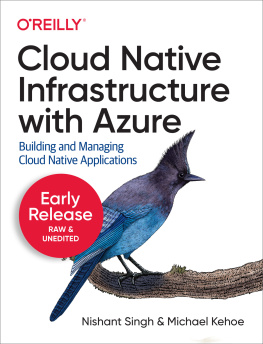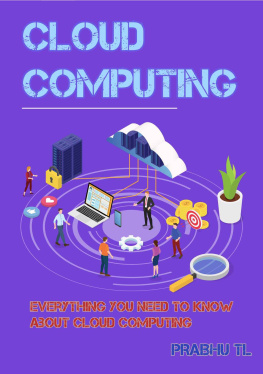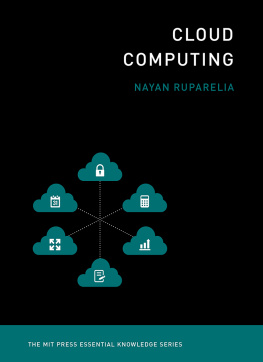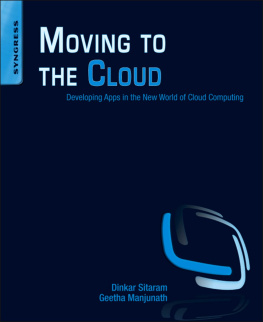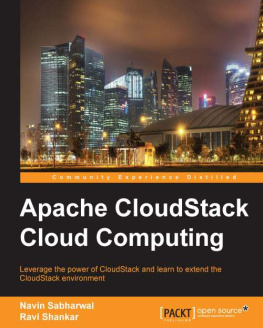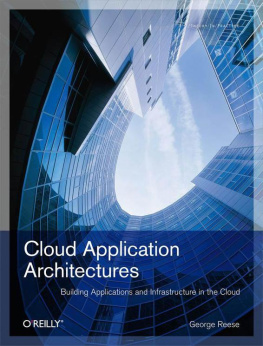
IEEE Press
445 Hoes Lane
Piscataway, NJ 08854
IEEE Press Editorial Board
Tariq Samad, Editor in Chief
| George W. Arnold | Ziaoou Li | Ray Perez |
| Giancarlo Fortino | Vladimir Lumelsky | Linda Shafer |
| Dmitry Goldgof | Pui-In Mak | Zidong Wang |
| Ekram Hossain | Jeffrey Nanzer | MengChu Zhou |
Kenneth Moore, Director of IEEE Book and Information Services (BIS)
Technical Reviewers
Caroline Chappell, Heavy Reading
Tim Coote, CML
Stuart Curley, Northgate IS
Rocky Heckman, Microsoft
Paul Schuster, BP
Steve Woodward, Cloud Perspectives
Lean Computing for the Cloud
Eric Bauer
Copyright 2016 by The Institute of Electrical and Electronics Engineers, Inc.
Published by John Wiley & Sons, Inc., Hoboken, New Jersey. All rights reserved.
Published simultaneously in Canada.
No part of this publication may be reproduced, stored in a retrieval system, or transmitted in any form or by any means, electronic, mechanical, photocopying, recording, scanning, or otherwise, except as permitted under Section 107 or 108 of the 1976 United States Copyright Act, without either the prior written permission of the Publisher, or authorization through payment of the appropriate per-copy fee to the Copyright Clearance Center, Inc., 222 Rosewood Drive, Danvers, MA 01923, (978) 750-8400, fax (978) 750-4470, or on the web at www.copyright.com. Requests to the Publisher for permission should be addressed to the Permissions Department, John Wiley & Sons, Inc., 111 River Street, Hoboken, NJ 07030, (201) 748-6011, fax (201) 748-6008, or online at http://www.wiley.com/go/permission.
Limit of Liability/Disclaimer of Warranty: While the publisher and author have used their best efforts in preparing this book, they make no representations or warranties with respect to the accuracy or completeness of the contents of this book and specifically disclaim any implied warranties of merchantability or fitness for a particular purpose. No warranty may be created or extended by sales representatives or written sales materials. The advice and strategies contained herein may not be suitable for your situation. You should consult with a professional where appropriate. Neither the publisher nor author shall be liable for any loss of profit or any other commercial damages, including but not limited to special, incidental, consequential, or other damages.
For general information on our other products and services or for technical support, please contact our Customer Care Department within the United States at (800) 762-2974, outside the United States at (317) 572-3993 or fax (317) 572-4002.
Wiley also publishes its books in a variety of electronic formats. Some content that appears in print may not be available in electronic formats. For more information about Wiley products, visit our web site at www.wiley.com.
Library of Congress Cataloging-in-Publication Data is available.
ISBN: 978-1-119-23187-5
Introduction
The standard definition of cloud computing is a paradigm for enabling network access to a scalable and elastic pool of sharable physical or virtual resources with self-service provisioning and administration on demand (ISO/IEC 17788). This paradigm enables organizations to shift from traditional, capacity-driven operational models to lean, demand-driven operational models. This work adapts lean manufacturing principles across the cloud service delivery chain to achieve the lean cloud computing goal of sustainably achieving the shortest lead time, best quality, and highest customer delight at the lowest cost.
Traditionally, ICT systems were configured with sufficient capacity to serve the forecast demand, plus a safety margin, for the upcoming months, quarters, or perhaps even years. After configuring application and resource capacity to serve that forecast demand, further changes to the configuration were often discouraged to reduce the risk of procedural errors or expositing residual software or documentation defects which might impact production traffic. Thus, significant excess resource and application capacity were often committed that would rarely or never be used, thereby wasting both capital and operating expense. Lean computing pivots from the traditional build-for-peak, supply-oriented operating model to a just-in-time, demand-driven operating model. Lean cloud computing enables sustainable efficiency improvements that are essential when offering service into a competitive and cost-sensitive market.
This work considers lean cloud computing via three interlocking threads of analysis:
Methodically applying lean (i.e., Toyota production system) thinking to the cloud service delivery chain, especially regarding rapid elasticity and scaling. This is the focus of Chapter 3: Lean Thinking on Cloud Capacity Management, Chapter 4: Lean Cloud Capacity Management Strategy, Chapter 7: Lean Demand Management, Chapter 8: Lean Reserves, and Chapter 10: Lean Cloud Capacity Management Performance Indicators.
- Applying insights from electric power generation and grid operations to cloud infrastructure operations. This is the focus of Chapter 5: Electric Power Generation as Cloud Infrastructure Analog and Chapter 9: Lean Infrastructure Commitment.
- Applying insights from inventory management to cloud capacity management. This is the focus of Chapter 6: Application Capacity Management as an Inventory Management Problem.
This work considers business, architectural, and operational aspects of efficiently delivering valuable services to end users via cloud-based applications hosted on shared cloud infrastructure and focuses on overall optimization of the service delivery chain to enable both application service provider and infrastructure service provider organizations to adopt leaner, demand-driven operations to serve end users more efficiently. Explicitly considering the service delivery challenges of both the cloud service customer organizations that operate applications running on cloud infrastructureas well as the challenges of cloud infrastructure service provider organizations that operate shared cloud resourcesoffers perspective and insight to enable optimizations across the entire service delivery chain to benefit cloud service providers, cloud service customers and cloud service users. The work is targeted at readers with business, operational, architectural, development, or quality backgrounds in the ICT industry to help them achieve the shortest lead time, best quality and value, and highest customer delight at the lowest cost for their service offerings. The work does not consider lean or agile development, software-defined networking (SDN), facility planning, or tradeoffs of any particular implementation technology (e.g., virtualization hypervisors versus Linux containers).
This book is structured as follows:
- Basics (Chapter 1) this chapter lays out the key concepts that underpin this analysis: cloud computing principles and roles; demand, supply, capacity, and fungibility; and differentiating demand management, capacity management, and performance management.
- Rethinking Capacity Management (Chapter 2) this chapter reviews traditional, ITIL, and eTOM capacity management models, and factors capacity management into two components for deeper consideration: (1) capacity decision and planning and (2) capacity action fulfillment. The chapter lays out the three fundamental cloud capacity management challenges:
Next page







